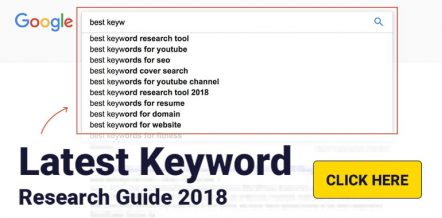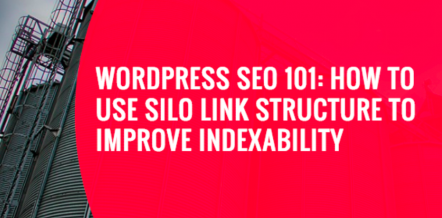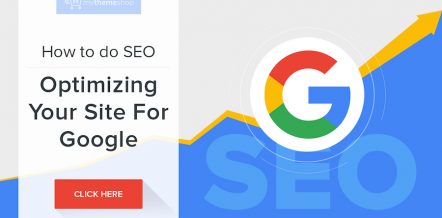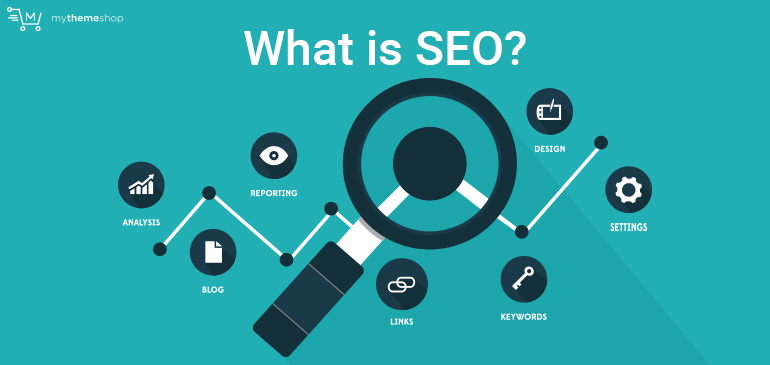
More than a million blog posts are published every day but only the top-ranked ones reach to the desired audience through the search engine.
With so much content on the web, how do you plan to make a mark and reach your target audience in such a crowded space?
This is precisely where SEO (Search Engines Optimization) steps into saving the day. Reaching the people who search for the type of content you offer (i.e. your target audience) has a lot to do with understanding the way they search for their point of interest as well as how search engines rank potential results for the query.
So, what is SEO and how it works? How to do the SEO of your website? Everything will be covered in this detailed guide. So stick tight for a quick SEO brainstorming.
Here are some of the topics that we would be covering in this detailed guide.
Table Of Contents
- 1. SEO Definition
- 2. Two-sides of the same coin: On-Page and Off-Page SEO
- 3. On-Page Optimization
- 3.1 Website Optimization
- Engaging Design & Good Overall Architecture
- Load Up Time
- Optimizing For Crawlers
- Mobile Optimization
- Security Protocols
- Schema Markup
- 3.2 Keyword Research
- Competitive Analysis
- High And Low Competition Keywords
- LSI Keywords
- Keyword Stuffing Vs Keyword Optimization
- 3.3 Content Creation & Optimization
- 4. Off-Page Optimization
1 SEO Definition
The goal of SEO is to rank a website higher in search engine result pages. Experts in this field do so through a set of optimization processes, some of which are applied to the content and the website, while others will focus on off-site parameters.
On top of that, SEO also aims to rank a particular website for the queries that are relevant to your websites niche.
No matter how good your content is or how well designed your website may be, you are still going to be stuck with no traffic if you are not ranking well in the SERPs (Search Engine Result Pages).
When we take a look at how the CTR (Click through rate) is distributed, within the positions on the first page, things get even more interesting.
Average CTR for the first rate of SERP (Source: advancedwebranking.com)
- 32.28%
- 16.59%
- 10.24%
- 7.08%
- 5.13%
- 3.82%
- 2.92%
- 2.28%
- 1.80%
- 1.46%
The majority of people searching for something never go beyond the first page of the search results. According to HubSpot this number went as high as 75% in 2014.
Pair that up with the CTR we provided above and you realize how much traffic you are missing out on by simply being ranked on the second page.
While you can find quick sheets and simple tips that are supposed to make your SEO efforts a breeze and a no-brainer, the truth is that there is no such thing. Most of these superficial articles are covering some aspects of the optimization process and, while SEO is not incomprehensibly complicated, it needs to be done thoroughly, not through shortcuts.
In this guide, we are going to dissect the entire process and attempt to clarify SEO as a whole and explain why it isn’t just a commodity or another marketing aspect. SEO encompasses all aspects that will make your web presence successful and lucrative.
Black Hat Vs White Hat

In order to understand SEO, we first need to talk about the division between two major philosophies.
In most cases, when people are referring to SEO, they are talking about White Hat SEO, which we are going to discuss at length in this guide.
As far as Black Hat SEO approaches are concerned, we are just going to give you the rough edges as we do not prefer it for various reasons.
Black Hat
As its name suggests, it has a lot less to do with the audience and doesn’t concern itself with their wishes. The goal is to get as much exposure as possible, by any means necessary (by breaking and bending the rules).
These kinds of approaches are mostly used by people who want to make a few thousand bucks and then disappear.
In most cases, they do disappear, since Google comes down hard on websites that use trickery to get ranked.
Keep in mind that, when you use Black Hat, you may get exposure fast but this approach is not a sustainable one. Once you get marked as spam, you will definitely lose your favorable ranking position or, in some cases, you’ll even get de-indexed, meaning that you won’t come up in search results – EVER.
After this happens, you are left with two options.
One: you can abandon your domain and move onto applying the same approach to another one, basically starting from scratch.
Option number two is to contact a White Hat SEO expert to attempt to rectify your wrongdoings. This process lasts a lot longer and is far costlier than just doing regular White Hat SEO from the ground up. However, once your site gets penalized, you will have to restart your work from a new site as it is really rare that you will get your content indexed again on the search engine.
White Hat
The white hat approach always keeps the audience and their needs as the central focus of its operations; creating quality content and services to satisfy the goals of the auditorium and the rules proposed by search engines.
Through this approach, your online presence can grow and, after a while, turn into a valuable resource which can bring its own, independent revenue into your overall budget.
Unlike Black Hat tactics, this approach is a continuous process that all successful online marketers resort to in order to improve their online presence because it is the only way to gain access to the majority of traffic in the online environment.
If you are building a web presence as a legitimate business, you will definitely need to go for the White Hat approach since the “dark side” can damage your long-term efforts and ultimately fail to provide a return on investment.
2 Two-sides of the same coin: On-Page and Off-Page SEO

White Hat SEO has two aspects to it and they are both equally important for your overall success. The On-Page aspect of SEO is focused on meeting all the requirements that the search engines need in order to crawl through your website and determine its value.
The Off-Page part is focused on external factors that Google and other search engines rely on to determine the trustworthiness and value of a particular web presence or individual post.
We need to stress the fact that there is no separating these two aspects. Sure, the On-Page phase needs to start sooner, especially in cases of new websites or badly optimized websites.
Still, when mapping out the plan for your SEO efforts, you need to think about both, since the way you approach On-Site optimization will definitely affect and, in some regard, limit your Off-Site efforts.
They are very much interlocked and the entire thing only makes sense and yields results as a whole.
3 On-Page Optimization

We can define On-page optimization as the actions you can take directly on your website to improve its ranking in the SERPs.
This doesn’t only refer to the optimization of your content but all the web pages, photos, and website functionalities that are deemed as a factor by search engines and users.
Most onsite optimization can be managed with a rudimentary understanding of HTML. If you are lacking in that department, you can consult one of the numerous HTML resources most of which are free.
WordPress, boosted with a few right plugins, can simplify your optimization efforts but more on that later.
Once you set the ground rules and complete the initial optimization process, the time to optimize a single blog post takes around 10–15 minutes. Still, you need to get there first.
In an ideal world, your optimization process will start as part of your website’s creation.
Doing this will help you remain consistent and on-point right from the start and avoid investing additional time and money into rectifying the mistakes you made at the beginning.
Website Optimization:
These are the technical ranking factors related to website functionality which search engines take into account during their crawl.
The best time to take care of these is right at the start. The more content you have and the older your domain is, the harder it will be to optimize these factors since the complexity of your web presence grows exponentially with time.
Simply put, there will be more plugins, more content, your website’s database grows larger, there are user accounts to consider, and so on.
While all this may seem awfully technical, keep in mind that all of these things are focused on providing the users with the best possible experience. Quality and functionality are the things that search engines value across the board.
Engaging Design & Good Overall Architecture
In most situations, you won’t need to make most of these decisions, since you can rely on your web designer to get them right.
Just in case, we are going to give some basic guidelines to help you make the right decisions.
There are more than a few situations where designers have been forced into making a bad design decision due to the insistence of their client. There is no “winging it” here; you have to know what you are doing.
Each user that lands on your page ask three questions:
- Is this the right website?
- If this isn’t what I’m looking for, can the website help me find what I’m looking for?
- What else can I do here?
Your design needs to answer all of these questions as clearly as possible. The user needs to be instantly aware of where they are, what this website does, the topic which they are searching for needs to be clearly displayed.
In cases where they need to find something on your website, they need fast access to the search bar, meaning it needs to be displayed properly so that it can provide easy navigation and you could avoid the situation of people leaving your page due to feeling frustrated.
Load Up Time
Majority of the blogs fail as they have a huge loading time.
In order to frame this factor properly, it might be a good idea to put yourself in the shoes of the user that lands on your site.
Attempt to remove that bias of being involved with the website and view it as just another website you stumbled upon, looking for something. If that website takes more than a couple of seconds to load up, you are out of there.
The only time people will have the patience to deal with a page’s sluggishness is when they are searching for something and you are the only one who can provide it.
Canadian researchers have surveyed around 2,000 participants in order to determine the average attention span of smartphone users.
It seems that our attention span has shrunk from 12 seconds (the beginning of the 2000s), to 8 seconds today. This is an invaluable piece of information for marketers and designers – Google also takes this into account.
There are more than a few ways to optimize your website to load up within an adequate amount of time. According to HubSpot, the ideal load up time for a page is 1.5 seconds, which is the speed of the top 20% web pages.
A warning message is displayed for websites that load up anywhere between 1.5 and 5 seconds.
Optimizing For Crawlers
The bots that go through your website to determine what’s on it are called spiders or web crawlers. The more pages they find on your website, the more likely they are to mark you as a good result for the engine.
There are a couple of ways you can ensure that they can do this without too much trouble. Interlinking your website well is one way to approach it and it also helps you lower your bounce rate, as well as keep the discovery process for your audience easy.
The other option is to provide the spiders with a sitemap which they will use to collect data about your website.
Mobile Optimization
The number of mobile device users surpassed the number of PC users somewhere between 2013 and 2014. There are more than 500 million people accessing Facebook exclusively through their mobile devices.
Not having an optimized website which can cater to most devices means that you are alienating a part of your potential audience. You can always look at your analytics to get an accurate number of people that use mobile devices to visit your website. Even if this number is insignificant at the moment, it will grow.
Search engines take mobile optimization as one of the factors of SEO and will give you negative points for disregarding it.
Security Protocols
This is the most recent addition to the On-Page optimization process. Security protocols (HTTPS and SSL) ensure that the users connecting to a certain website have a safe connection.
Google uses HTTPS across the board and, ever since 2014, they have included security protocols into their list of ranking factors.
Sure, at the time it affected less than 1% of the queries and, if that changed over time, it is a matter of speculation. Nevertheless, security protocols keep your traffic safe from malevolent external influences and help you rank better – it’s not that big of an investment anyway.
Schema Markup
Schema is a type of code that is universally agreed upon by search engines to serve the purpose of providing additional information about content.
Schema is actually added to HTML microdata so there is no need to learn a new programming language to use this markup. All you have to do is find the Schema code you need and add it. Here are some of the content types in Schema:
- Articles
- Products
- Software Applications
- Events
- Local businesses
- Restaurants
- TV episodes and ratings
- Movies
- Book Reviews
You needn’t worry about not finding the code for your website type, as there are hundreds of codes that include different types of niches, schedules, and so on.
According to Kissmetrics, websites that use Schema markup rank four positions higher than those that don’t on average. While this certainly isn’t a completely accurate rule, adding this markup definitely creates an SEO edge.
You can avoid the coding issues if you are using any premium WordPress Theme from MyThemeShop as all of our code is schema enabled and you won’t have to include any external code yourself.
This way you can avoid getting your hands dirty in the code, certainly a good option for non-coding professionals.
Keyword Research
Spamming keywords is a dead practice. Forgo all your efforts of calculating the right percentage of keyword density within your content and focus on keeping things natural.
If you use your keyword in the meta description, title, URL, and a couple of times within the text (plus a couple of semantic variations to boot) you will get the desired goal.
Google has become a master of understanding the contextual and semantical meaning of your keywords and, if you are still approaching keyword optimization through keyword stuffing, you are going to get marked as a spammer sooner or later.
One other important thing to understand is that you do not decide what your target keyword is, the audience does, and this is precisely why we call it keyword research.
The goal is to find keywords that yield traffic but are also not overly difficult to rank for.
While you may have great content and a pristinely optimized website, your authority will play a huge role in whether you will rank on the first page for a query that a lot of top-notch domains have attempted to rank for or not. New websites simply cannot compete with an authority within a particular niche.
There are more than a few ways you can approach keyword research, but the important thing is to actually do it.
Don’t just assume things, since this can lead to undermining your efforts and getting worse results than you could have.
Your keyword plan is important for your content creation process as well, since it makes it easier to find topics that your target audience is interested in and creating suitable titles that will attract people.
Competitive Analysis
The starting point for almost any keyword research for a new website starts with seeing what your competition is targeting.
It can be very hard to remain relevant and determine the right keywords to tap into, so it only makes sense that you take a look at what established niche giants are doing.
The ultimate goal here is to see what they are doing, find a way to improve it and gain a competitive edge. You can use openlinkprofiler to find out the backlinks of your competitor and analyze whether it would be easy to get such type of backlinks.
You can even use the Mozbar to see the authority of your competitor. Higher authority means that it would be a fairly difficult to beat it.
However, if you see sites with a similar authority of yours ranking for a specific keyword, that means you have found your keyword.
High And Low Competition Keywords
High volume keywords are those that have a high amount of monthly traffic and ranking well for these keywords can give you access to a lot of traffic.
Unfortunately, most of these kinds of keywords tend to have a lot of competition. It’s only natural that the more traffic particular keywords get, more people will attempt to rank for them.
It is important to determine how difficult it will be to rank for a particular keyword so you don’t waste your resources trying the impossible. Finding keywords with high volume and low competition is the best approach to gaining traffic.
You can use Google Adwords or SEMRush to research these keywords and find the ones that work best for you.
LSI Keywords
Not all users will use the same keywords to search for the same thing. Google uses LSI (Latent Semantic Indexing) to find these keywords to connect to queries that are related. If you identify these keywords, you can add them to your content to boost your ranking for a particular search.
You can use LSIgraph for finding the related keywords to your main keyword.
Keyword Stuffing Vs Keyword Optimization
Google doesn’t need much to identify what your content is about and what your primary keyword is.
An old trick usually applied by BlackHat experts is an approach in which you spam your pages through text, meta descriptions, and so on, to get an unfair advantage over the competition.
In some cases, they even use keywords that have nothing to do with what they offer, but they are high volume keywords so the final objective is traffic.
Usually, these keywords are grouped or come in the form of a list, etc. Unfortunately for them, Google identified this approach and, for more than five years now, this technique is useless, since it only gets you deindexed.
On the other hand, keyword optimization is a legitimate approach to optimizing your content so that search engines understand what you are aiming for and ensuring that you use the right terminology for the subject matter you are covering.
Keyword optimization is making sure that you have targeted the right people and in the right context with the content you are putting out.
Content Creation & Optimization
Content is the life-force of your online presence. The only way you can actually get people to spend time on your website is through content.
Without it, you can provide basic information about your operation and the services you offer, but you will not have a way to reach beyond sharing your homepage or your services page.
This is not by any means a new piece of information. Bill Gates was on to this all the way back 1996 and, no matter which type of online marketing you intend to pursue, you will always run into that saying “Content is King” within the research you do.
Consistent content publishing is also important. This fact has been misinterpreted many times and a lot of people still believe that they will get ranking benefits simply because they update their blog with posts 3-4 times a week.
Even though consistent activity is a good thing, spamming low quality content every couple of days isn’t really going to bring you the success you could have had. If anything, it will hurt your ranking.
But, we are getting ahead of ourselves. Let’s take it one step at the time, and talk about how to approach content creation.
Content Plan
The first thing you need to decide upon is what goals you want to achieve with your content. If you don’t have a clear goal in your mind, your entire plan may be compromised.
Next, you need to decide on the type of content you are going to create. Are your goals more easily achieved through ‘Guides’ or are Infographics a better choice.
Maybe you want to go for videos to provide an easier way to engage with your information. It all depends on your audience and your goals, so find the type that works for your particular niche and situation. These are the most popular content types:
- Blog posts
- eBooks
- Videos
- Infographics
- Podcasts
- Templates
Once you decide on the content type, it is time to come up with titles. Create a publishing schedule and start working on your content. In this part of the process, you’ll rely heavily on keyword research.
Your plan will always look great until you start publishing. Even though it is an important part of your entire approach, make sure that you test things out.
If a certain content type is giving you better results, do more of it. Stubbornly following a plan that isn’t working for you is not a good decision and you should remain flexible, ready to innovate and adapt to the changing situation.
Content Realization
Depending on your in-house resources, you may decide to outsource or do the content yourself. Whatever you decide to do, keep in mind that your content needs to be high quality.
There is no room for fluff content, bad grammar, poor text optimization and other common content issues that plague the inexperienced content marketers.
Make sure that your publishing schedule is not too ambitious and that you can actually keep up with it. It is a good practice to have at least a few posts prepared before you actually start publishing so that you can give yourself a little breathing space just in case.
You should also decide if your blog is going to be a place where multiple authors publish their work or are you simply going to use it to promote the work of a single author.
Some businesses opt for the decision to put their brand name in the author section, but this is quite a waste. While you can build your brand through active blogging, you are wasting its potential by not putting the author’s name on the piece they wrote. People, in general, are far more likely to trust and connect with real people than with brands.
Hoever, you can still go with a brand name once you reach a pedestal.
When To Publish The Content
We are going to talk about the concrete steps you need to take to determine if a piece of content has been properly optimized for publishing.
One of the most popular tools that can help you keep track of the necessary changes is the Rank Math SEO Plugin. This is one of the most popular and most downloaded plugins for WordPress and it has a long list of features.
Some of the most important ones include adding meta descriptions, SEO titles, keywords, and adding custom titles for tags, categories, etc.
It is important to check and optimize the following content factors to ensure you are dishing out high-quality content. Let’s have a look.
1. Keyword Density

A lot of people obsess about having the right percentage of keywords across their content but this parameter has lost its value. Keywords are there to indicate the subject matter and help search engines and users determine if your content fits a particular query.
There are websites out there ranking for keywords they don’t mention once within their content, but they rank because their content is good and well optimized.
A good rule of thumb is to add the keyword 2-3 times and a few variations here and there including the LSI keywords.
Obsessing about density will only result in making your content seem spammy to users and crawlers. However, anything between 1-3% should be fine if you are including the keywords genuinely and in a natural fashion.
2. Tags And Categories

Tags and categories are important for navigation, especially if you have a blog that deals with a diverse subject matter.
Tags allow people to find content that deals with a particular subject more easily. Categories help with the discovery process, especially in situations where there is a lot of content on your site.
3. Content Structuring

Structuring content is not an overly complicated process. Your ultimate goal here is to make the content easy to read and make it easy to identify different sections as well as important information.
Proper headings and subheadings are a necessity to ensure skimmability. Bullet points, tables and bolded pieces of text are also good tools to achieve this. Introducing good spacing is also a visibility factor.
Practice moderation here as well. The point is to make the text easier to read, not flood it with bullets and tables.
4. Permalink Structure

Including your keyword in the permalink is good practice but people tend to stuff a lot of things into their URL.
Rank Math recommends that we keep things simple and avoid complex slugs and permalinks. There is an entire list of things you can add to your permalink but if it has no benefit to you then what’s the point?
5. Image Alt Tags

Adding keywords to image alt tags can help crawlers do their job better and help you rank better. The process is simple: in the title section for the photo, you add the general title of the image, while in the alt tag section, you need to input a short alternate tag.
This alternate tag is displayed in place of your image if your user has a slow internet connection and if it takes too long to load the images on your website.
6. Interlinking

Linking the articles among themselves has two benefits for you. One, readers will stay on your domain and browse your other content. Two, crawlers will have a much easier time finding content on your website.
Keep the linking natural and plan ahead. It will be much easier to interlink your articles if you designed the pieces to compliment each other.
Interlinking also helps in delivering an equal link juice to your linked pages which would further help you to rank your content better on the SERPs.
4 Off-Page Optimization
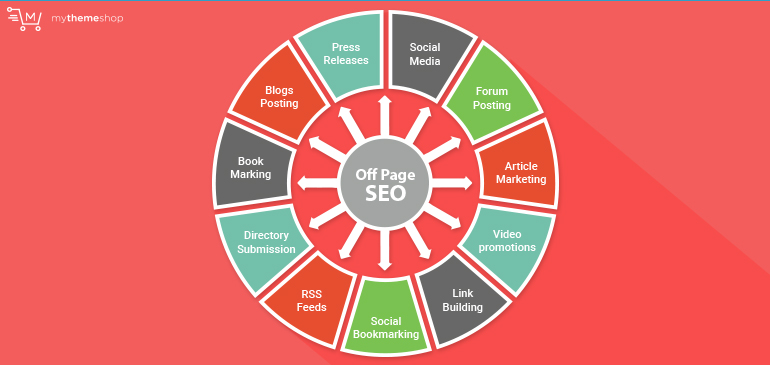
As far as optimizing Off-Page factors goes these are a bit more out of your hands. Some of these are set in stone and there is nothing you can do about them, while others may allow a certain level of influence.
Authority
This ranking factor was devised by Moz and you can use one of their tools to check your authority (including MozBar, their free tool).
Your authority will always fall somewhere on the scale from 1 to 100, the higher the number, the bigger your authority. There are two types of authority that you can work on:
Page Authority: Indicates the rankability of a particular page.
Domain Authority: Indicates the rankability of your entire domain.
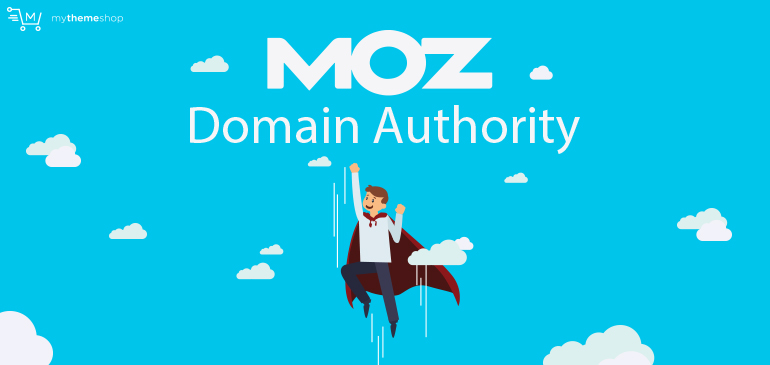
Moz uses more than 40 factors to determine the authority of a particular page or website, but you should be aware that Moz points out that this is strictly a comparative metric.
There is no such thing as good or bad authority. We would also like to point out that the higher your authority is, the harder it is to keep it growing. You are going to blaze from 1 to 30, but from there, you are going to keep rising slowly, assuming you are doing things properly. The higher you go, the harder it gets.
Your authority is constantly going to fluctuate, there is no way to ensure that it remains fixed, which is a good thing. The whole process is based on machine learning and it can be quite difficult to determine exactly why your authority changed, for better or for worse.
You should be aware that, even if you gain more links as well as links of better quality, your authority can still drop and vice versa. Furthermore, sometimes, it will take more than a few index cycles for the newly acquired links to be included in the calculation.
The best way to approach improving this metric is to simply do things by the book. If you are doing good things for your domain and your users, your authority will rise naturally.
Age Of The Domain

This is one of those small ranking factors that you shouldn’t stress out about too much. You can check out Matt Cutts’ video on the subject if you are unsure about how big of a deal is building your presence on a seasoned domain.
As you can see, there will be a very small difference between a website that is a couple of months old and a website that is a 12 months old so there is no need to invest into a seasoned domain name for SEO purposes.
Bounce Rate
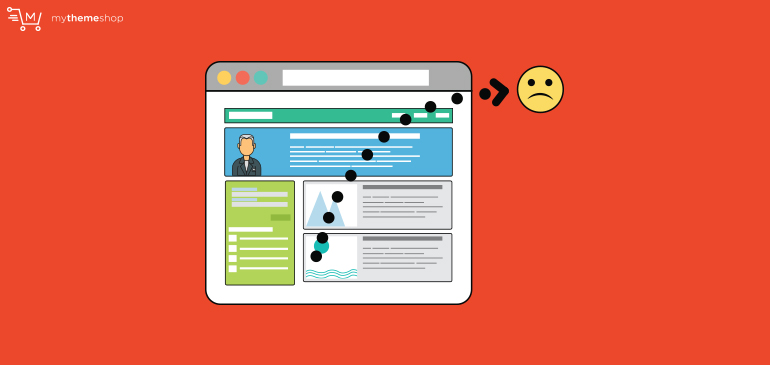
Your bounce rate is the number of people who leave your website after only viewing one page. The higher your bounce rate, the more you give off the impression of being a bad result.
Search engines will assume that most people who land on your page are dissatisfied with what they find there and, due to this, they will consider you a bad result for a particular query.
There are a number of reasons why your bounce rate can go up. In some situations, the quality of the content is what drives people off. In other situations, the content isn’t providing the information it promises to provide.
Bad audience targeting is also a potential issue, since it only makes sense that people who are not interested in a particular subject matter will immediately hit that back button and leave.
When it comes to optimizing your web presence to lower your bounce rate, there are more than a few things you can do.
Some of the points included in this SEO guide (like the interlinking part) will also be beneficial, but you should be aware that the average bounce depends on the type of website you are running and the page your audience lands on.
Average bounce rates for various website/page types:
Content websites: 40 – 60%
Lead generation: 30 – 50%
Blogs: 70 – 98%
Landing pages: 70 – 90%
Service sites: 10 – 30%
Retail sites: 20 – 40%
The general rule is that users will stick around the sites that are easy to use, have great content and are upfront with the information they will offer. They also provide users with easy navigation and clear calls to action.
If the page or website are poorly designed and difficult to use, most people that land on them will leave without clicking anything.
You should definitely follow your bounce rate and see if it is improving, but you need to set realistic goals for yourself. This is why we have provided you with the averages based on the type of website.
This is also something you should test out. In some cases, A/B split testing can help you determine which design solutions improve your bounce score and what design feature makes it worse. Experience and testing are the prime keys to lowering your bounce rate.
One thing that can really make your bounce rate skyrocket is putting up too many ads on your website and spamming your audience with pop-ups.
Greed is not good when it comes to this and you need to find a way to monetize your website without losing your audience. What’s the point of earning a few bucks if you are going to lose all the people that helped you earn them?
There are some things you can do to avoid losing too many people while monetizing your blog with ads, like addressing your community and notifying them about which things on your blog are sponsored.
Being straightforward and honest is a good thing and will help you keep the majority of your traffic. Again, practice moderation!
Inbound Links

There are “experts” out there who will claim that building inbound links is the most important aspect of SEO, but it isn’t.
It’s just another part of the SEO puzzle which a lot of people tend to struggle with. While it may be a bit difficult, you can impact the frequency of getting inbound links.
The most basic way to do this is to provide high-quality and unique content. Influencers and experts will not think twice about linking to credible and useful resources in their work.
Still, being passive and relying on chance alone to get links is somewhat counterproductive.
This approach will take a long time to get rolling and it will require you to keep dishing out top-notch content frequently, and you still get no guarantee of getting inbound links.
1. Guest Posting

In the majority of cases, webmasters from authority websites will not have an issue in linking to a quality piece of content you have written when contributing to their website.
If you have already populated your website with quality content and have published a few pieces elsewhere, you will have the necessary portfolio to approach editors with a pitch like this.
This approach can work for both high authority websites and mid-range websites. In some cases, bloggers will collaborate on both domains due to the fact that it is mutually beneficial.
If you are trying to get the attention of top-notch authority publishing sites, knowing their publishing schedule can really help you out. Being in the right place at right time, with the right content will help you get published more easily.
2. Images Everyone Wants

By creating a gallery of high-quality photos along with a simple way to download and credit them back to you can give people the incentive to provide you with inbound links. You provide free photos which people can use (your value) and you get inbound links from websites that use them.
Sure, this may seem like an expensive investment which is why you should hire a semi-professional or amateur photographer to cut your costs.
You can even do it yourself if you have a decent camera or even a smartphone that can create photos of adequate quality.
To save the cost, you can use stock images that are free to use as well.
Infographics are also a good way to get inbound links since this type of photo content is very practical and a lot of people will use it as a resource.
Crafting a good infographic is not easy and should not be taken lightly. If you fail to provide value through the content piece, it will not give you the inbound links you set out to get in the first place.
In a lot of situations, people will not credit the photos they are using, but tools like BuzzSumo and Google alerts can help you search the web for mentions of your website. When you identify these signals, you can find the webmasters’ contact information and ask them to credit your photo.
Each photograph should have its own page and you should update your gallery on a regular basis.
The publishing schedule needs to be public so you can get people to link to yours regularly. Make sure you optimize these photos before you put them up and things should start rolling quite nicely.
3. Broken Link Building

Websites that have a lot of content will always have broken links all over their website. A broken link is your opportunity to provide a resource that can replace the link that is no longer working.
We recommend you stick to one author at a time due to administrative reasons. It can be quite difficult to keep track of negotiations on multiple fronts. There are more than a few tools you can use to find broken links and W3C’s Link Checker is the most commonly used one.
This doesn’t always work. A lot of blogs and authors will tell you that they do not provide free linking opportunities and this is why you need to make sure that you approach more than one potential domain owners and webmasters, just not at the same time, for administrative reasons.
4. Paying For Links
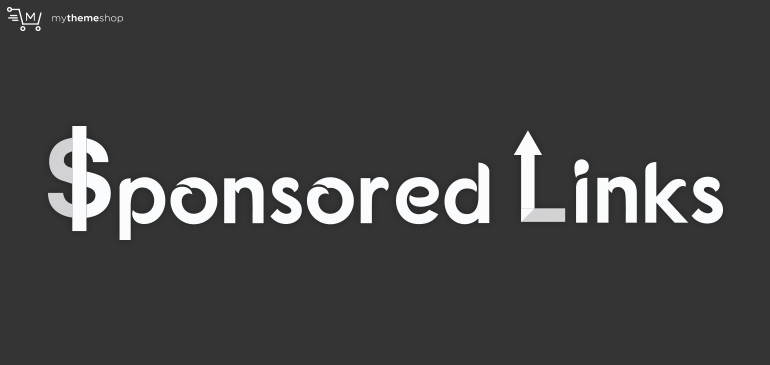
If Google catches you paying for inbound links, you will get penalized straight up front. There are, however, a few legitimate ways to pay for links without being regarded as a fraud.
Donating to a charity will almost always get you a link, good PR, and you would be doing a good deed along the way. Perfect isn’t it?
Your other options include hiring a blogger to do a piece for your website which they will link to in their later work.
He or she will also certainly share it on their social media and you will get some traffic too. This is a great way to tap into a market that is “related” to yours and expand your audience significantly.
5. Gov And Edu Sites

Websites that have a .gov or .edu domain are considered absolute authorities since they belong to strong institutions. Getting a link from one of these sites is quite difficult and can be a lot of work. Still, a link from a .gov or .edu domain can give you quite an SEO boost.
Some approaches people have used to get a link pointing back to them are doing a review of their educational program, sponsoring a student event, being a guest speaker, taking on some position within your local government and so on. Most of these will require more time and sometimes even a financial investment, but they are well worth the effort.
6. Adding Value To An Authority Blog

Most niche experts and influencers have long term plans for their content publishing. Within that chaos, some content is always passed over due to time limitations.
Contact some of your niche influencers and ask them if they need some piece of content researched and written.
You should be aware that no one will give you a writing task if you can’t prove to them with proof that you are a top-notch writer and researcher. Your portfolio counts big time in these situations.
These tasks, if you get them, will never be easy. Although you will usually have the authority to ask for interviews and other insights by contacting people as an authorized representative – you’ll need to ask for their permission first, but if they agreed to let you write a piece of content for them, they’ll usually give you a link back to your work.
These are just some of the approaches you can take to get links leading to your website without breaking the bank and risking getting penalized by search engines.
Geo Factors And Social Signals:
Some SEO factors are not related to who you are but where you are and who you “hang out” with.
The people who share your content, be they regular users, influencers, niche experts and so on always contribute to boosting your SEO signals. However, it only makes sense that people who have a greater following will bring you better results.
Social Media Signals
One of the best ways to ensure that a piece of content you have published gets indexed fast is to share it on social media and get some traffic and shares on it. Social media signals help search engines identify a new piece and rank it better.
Not all social signals have the same weight though. Depending on the popularity of a person who shared your piece of content on social media, you may get different results.
Naturally, if somebody who is a niche authority and has a large following shares your content, you’ll get a bigger interaction with a larger crowd, the majority of which will be your target audience.
Building your own following is a big issue as well. There is always a strength in numbers. It’s rather straightforward really.
Building connections that have the same interest, in other words finding your target audience and connecting with them, will help you create a community of people who actually have things to discuss amongst themselves and with you.
This will not only get you SEO benefits but valuable niche connections that can open new opportunities for you, help you spread the word about your website, help you with your branding efforts and so on. Still, this is a massive continuous effort which you need to work on an everyday basis.
Finding the right social media networks to connect with your audience is also one of the crucial factors in this endeavor. Not every network will be suitable for every business and not every website has the team or the strength to manage their growth, interaction, and activity on multiple networks.
When making this decision, you need to take a couple of factors into account. First of all, find the networks on which your target audience is most likely to be. A good way to approach this is to check out what the competition is doing.
One other thing to take into account is the type of content you are dishing out. Is it image-centric? Does it strive to educate? Is it entertaining? The key to success on any social media is creating content that is suitable for reaching users in that environment.
As an example, Pinterest is an image-centric social media network with 81% of users being female. Their food and fashion categories are very strong and users are very engaged with the content. Furthermore, if you have a good product photography, you can link directly to a product page, thus getting potential leads without too much hustle.
Understanding how a particular platform works and how users most commonly use it is crucial to your success.
Language
Doing SEO for languages other than English is a bit harder to get into if you are not a native. The smartest thing to do when it comes to this is to rely on a professional SEO expert from the country you are targeting.
Getting the assistance of a native speaker in your SEO efforts will only take you so far. You need to ensure you find the right keywords, get that all-important semi-casual tone properly and find the engines the majority of people from your target country use.
On the other hand, ranking for a particular query in a language that is not English is usually a lot easier. This is because the competition in this sphere is less fierce and not every niche has established influencers. You will still have to rely on someone who has experience working in the niche to make it work.
Having a multilingual website may bring you more positive SEO results, but if you are only focusing on translating your website and content and not including other aspects like- social media activity and marketing strictly focused on a particular country, you will get limited results. With SEO, it is always about doing the whole shebang, not just a part of it.
For WordPress you can use the “WP-Goole Translate” plugin which is a premium WordPress plugin designed by our expert dev team.
Conclusion
SEO is often discussed as another online marketing approach. The truth is that SEO encompasses a broader approach to establishing a well-organized and high-quality online presence.
This is why most SEO experts will tell you that good SEO isn’t something you can invest in and get results. It needs to be a continuous effort you plan for and abide by. There are no shortcuts you can take or tricks you can pull out of your sleeve and not suffer for it down the road.
Understanding how SEO works is more or less understanding how the Web works. Once you get a grip on how things function, you will be able to make good decisions for your website and help it grow. Stability, longevity, and good PR are just some of the benefits you can get from your efforts.
Furthermore, you will build a resource which can produce its own revenue, thus boosting your budget and creating new opportunities.
So, keep things consistent, pay attention to details, and your ranking will grow steadily! Never forget about your audience though. If they keep coming back satisfied, you will definitely get better SEO signals!
